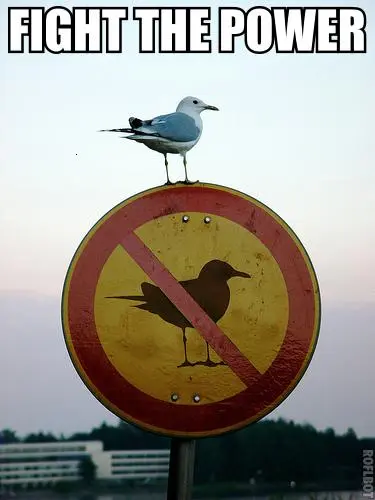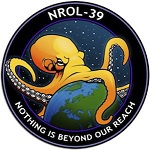Yet another reminder that people act like the civil rights movment is distant history, but a lot of the people who were involved in the protests are atill alive today.
but a lot of the people who were involved in the protests are atill alive today.
The protests on both sides. They’re voting, are you?
Yeah, well I had the general bias in my mind that everyone in history books was dead already or almost dead except Neil Armstrong because space stuff and also I met him.
This is called being a child. Even up at 20 years old, longer accounts of time seem huge!
I’ve been learning more lately and I live in a city now. There’s more black people than white people and their mixed reactions to just my existence has made me think a lot about why they feel that way. I’ve seen everything from the defiant angry dudes to older dudes who seemed legitimately afraid that I might notice them. It’s wild.
It’s really easy to grow up right thinking racism isn’t a thing anymore because you yourself aren’t racist and everywhere you look people are looking down on racism.
It’s gonna take a few generations before everyone involved and everyone roped in by the older generations are dead before racism seems like a distant memory. We can’t just go acting like it’s all over with.
This is probably one of the most egregious reasons that civil rights photos are in black and white in the textbooks despite color cameras having been a well-established thing by then. To make it seem like it was long ago when it was/is still quite recent. RedliningYour textbooks are made in Texas and the publishers therefore use Texan standards nearly everywhere…Educational material should not be made in red states.
Textbooks are likely to use pictures from photojournalists which were mostly black and white in the days of print media. It also likely makes it cheaper to print the textbooks.
And yet other pictures of famous people in these textbooks were/are in color. There is a visual discrepancy in presentation and it misleads the viewer (children in this case) in a way they may not even realize for years or decades after. Whether this particular discrepancy is purposeful or not it is problematic.
celebrities get portraits done, civil rights leaders have pictures taken of them by journalists as they do important things. most civil rights leaders didn’t get many professional portraits done, the textbooks use the pictures of them actually doing things. tough you may have a point that it would be good to include a color picture or two of them if they’re out there.
deleted by creator
There are color photos out there, ain’t a hard thing to look up. Journalists were probably shooting in color even if they weren’t getting printed that way since the average person could have a color camera by that point in time.
You’re reading too much into it. Colour ink was still expensive back then up until the late '80s to '00s. Which is why coloured photos were uncommon before, especially in the 1960s.
And before anyone suggests it, professional historians strongly discourage colouring black and white photos. This could give false impression of what the actual colour of some objects, or the subject itself in the photo.
I just Googled by the way of your claim, it turns out that the narrative is indeed hamfisted: https://eu.usatoday.com/story/news/factcheck/2020/06/20/fact-check-most-civil-rights-era-images-werent-made-color/3210472001/
Our ruling: Partly false
We rate this claim as partly false because it excludes context essential to understanding the difference in use between black-and-white and color photographs taken during that time period.
Although there is documented evidence of photo suppression during the civil rights movement, experts said the use of black-and-white over color photography was not part of it.
The post is misinformed and overlooks the fact that color photography was rare in the 1960’s due to its higher price, photojournalists’ need for quick turn-around, the sentiment of black-and-white photography being the “true” way of documentation and the challenges surrounding accurately depicting people of color with color film.
In addition to color being too expensive for textbooks, it was also too expensive for newspapers. And colour film was more expensive than black and white film. Since photos taken by photo journalists at the time were meant to be printed in newspapers in B&W, most photographers shot with B&W film even while the technology for colour photography existed.
the sentiment of black-and-white photography being the “true” way of documentation
Well… B&W does have better resolution, both back then and now. Notice how many photos from NASA probes are in B&W? It’s because to get color you either have to take three photos with filters on them and combine them together, which is what NASA does. Or have clusters of three different sensors in an array to pick up the different wavelengths, which is what most consumer cameras do. But that effectively cuts the resolution into a third of what it could be if you had sensors that simply detected light without caring about the wavelength.
Of course the way most cameras are constructed you don’t get any benefit from B&W in terms of resolution since the way the sensors are arrayed is optimized for colour. But NASA’s cameras allow for higher resolution B&W images (when they already know the colour of the thing they’re looking at and they want to see detail) and the filters are there when they need to figure out what colour something is.
Is that why photos of the USSR are mostly in black and white too?
Is it not good and effective that it’s done that way?
Genuine conspiracy theory tier logic right up there with white people breaking noses off black statues.
She lived long enough to have done a DVD commentary on her own 2002 life story:
https://en.m.wikipedia.org/wiki/The_Rosa_Parks_Story
What a missed opportunity!
She lived long enough to sue Outkast over the use of her name in their song ‘Rosa Parks’.
Wack
MLK Jr. and Anne Frank were the same age.
Abe Lincoln got a fax from a samurai.
(Okay that didn’t actually happen - but it could have)Abe did get fanmail from Karl Marx though
Abe was a superstar. Everybody wanted a taste.
I wonder what Abe and a samurai would’ve talked about.
Killing vampires.
Facts, duh.
Which brand of fax to buy
Why the kitana was a super-sword.
Kinda random, but: the first device capable of measuring the size of an object to a one millionth of an inch resolution was built in the 1840s. So this would have been old technology when Abe got his fax.
She looks a lot like Alexandria Ocasio-Cortez.
Careful, you might start a brand new conspiracy in certain circles with a comment like that.
My first thought is that Zendaya looks a lot like Rosa Parks; at least in that photo.
Somebody
Once
Told me
I’ve also heard her husband drove a car meaning she didn’t need to take the bus








